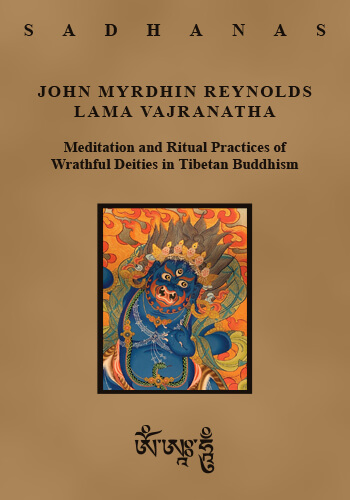
Available directly from Vajranatha
Pages: 42 Price: 10 €
One of the aspects of Tibetan Buddhism that have fascinated many Westerners is the depiction in Buddhist art of various meditation deities. These exotic images of naked dancing Dakinis and of ferocious Wrathful Deities, often resembling what we Westerners think of as demons and as something evil, seems strange and ironic to us. What appear to us as peaceful, celibate, contemplative Buddhist monks appear to be meditating on and visualizing such bizarre and terrifying figures in their practices. But there are solid reasons historical, psychological, and spiritual for such practices. This seminar will look into these meditations and rituals, and in particular, into the sadhana practice of meditating upon the wrathful aspects of the Great Bodhisattvas. For this, there is Vajrapani, and also his collaboration with his two colleagues in persuing compassionate enlightened activities, Hayagriva and Garuda. Such fierce-looking Bodhisattvas are manifestations of Buddha enlightenment, and in their hearts they are peaceful, calm, and entirely compassionate, but in order to overcome and transform the negative energies of anger and hatred, which afflict our world, they display a wrathful face. This is like a wise and loving parent displaying a wrathful face to disciple a naughty child. In general, the aim is to transform the energies of the negative emotions into enlightened awareness. This is the aim of Tantric practice in the Buddhist sense. This also brings up the question of what is evil and where does it originate. One may apply the sadhana practice of Wrathful Deities in one’s meditation in daily life to handle thoughts of anger and aggressiveness, as well as to develop the courage to face the difficulties one faces in life.
Table of Content:
- Introduction
- Guru Yoga for Padmasambhava
- Daily Practice for Vajrapani
- The Sadhana for Hayagriva, Vajrapani and Garuda
- Biography